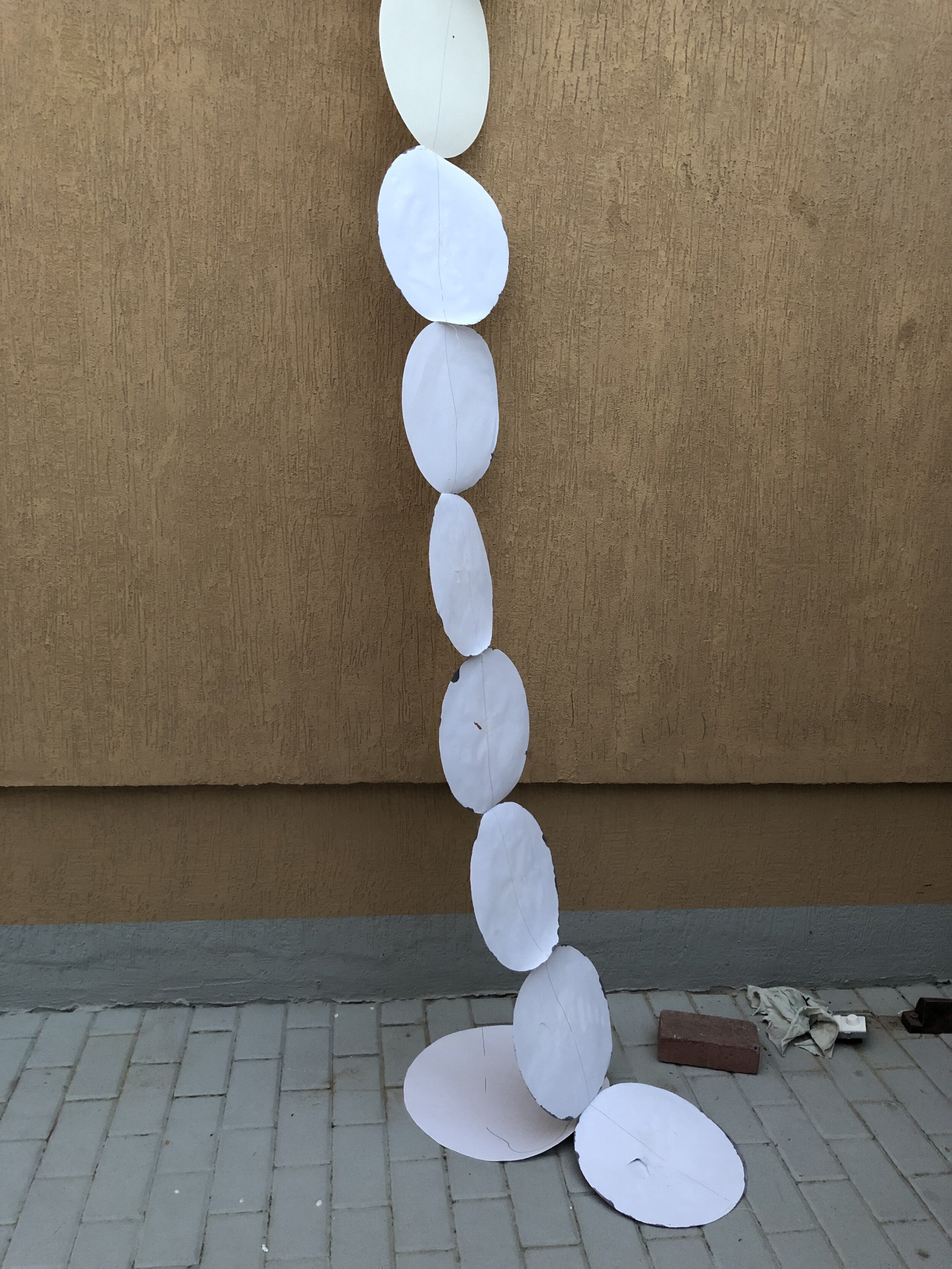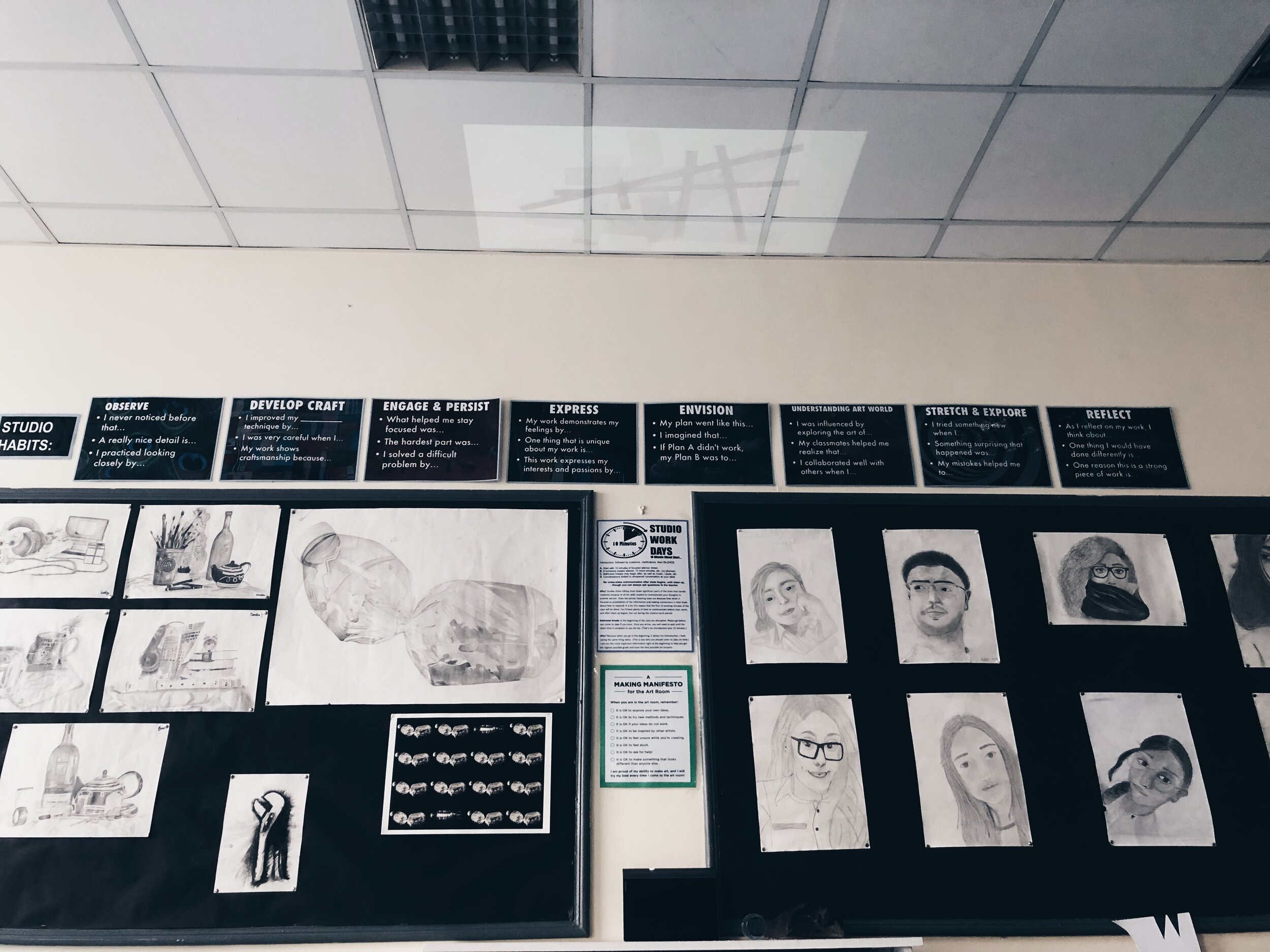Visiting Lecturer tutorials
Catherine Baker
I found this tutorial, much like the previous one with Catherine Baker, really useful. Catherine manages to extract the conciseness I strive for from my words, which of course is her job! Below are some of the notes from the session:
What was I working on since the last tutorial:
- Worked on changing focus,
- thinking about engagement
- clarity of intentions
- created some drawings as performance and as video pieces.
- Made leporellos but they are not all filled.
- It feels complicated to fill them with the line drawings from my sketchbook.
- One is filled with this and it feels heavy and confusing.
- NOT CHAOS - collision
- Generally feeling lost and struggling with time-management, the desire to complex/labour intensive work and the frustration of not creating ‘enough’
My thoughts and discussions with Catherine Baker:
Catherine’s suggestion: If the demands on time are too much make work that is fast, think about the process and allow the work for the course to be quick. That’s okay too. Proposed making work that is not time laborious, for the course. Making processes that happen quickly, like printing etc - This is a great point. I was worried about simplified work not reading well, that things have to be overly intricate but Catherine pointed out that my initial line pieces had more strength and clarity than the following dense pieces.
Clear message in the initial line works of materials mounted side by side - consistency - constant - constancy the line, simple, humble act, the physical thing and the simple technology of the pencil and the outcome is different depending on the surrounding - the interpretation is dictated by what the line encounters - beautifully simple and articulate about the process - the materials dichotomy and horizon line, constant in life, also denotes movement or boundary.
They then became too organised. The order stops it being responded to in the same way. Auditing it took away from it. The constant is the line, and that's enough - over ordered it, the interesting things were the line meeting the unpredictable backgrounds.
Leporello - the line is constant - it is time- the time in the material - the paper - trees, the time to grow, - material that articulates a relationship to time, wood veneers, feel like paper, and have the grain of life in them. Think about materials that the line might encounter and illustrate time. The paper has this in its process, like the wood veneers. Wood veneers - maple, soft grain, oak burr, time is in the material itself.
Can you describe time in a non-numeric fashion, light and dark, - moon calendar - sun rise and set, etc, gradation that suggests time, not man made but something that is more tangible human, gradients, the looping and constant - This feels like it needs to go into the video works. These manifestations are becoming addictive and feel like a natural progression of the work, looking at the process and the final piece, how it is staged for the testing boundaries project.
Sand drawing - Draw, draw out, draw in, draw breathe, opening, drawing, drawback, - has texture and the poem and process work well, how does this change when the subject is varied, if the writing becomes about drawing or if the act is drawing rather than writing.
Anna Barriball - draw - paper over a fireplace, frottage piece - breathing drawing
Human connection to life - comes back to the Constancy of time.
Articulate the fundamentals of the pages, it frames the constancy on the line, the way the line behaves in response to what it contacts - the size of the page, the traces, damage, emboss.
Print processes - embrace the reveal of printmaking - ink a plate
Mono printing - it will give you a line that you don't see develop and will make you more aware of the line happening, the line will only reveal itself once you lift it off.
It becomes less habitual - repeat a process that they have done forever, the drawing unfolds before us, or a print approach it becomes less visually dominant - it engages more of a physicality - more about the implements, the forces, the delicacies, - elevate the processing to another space - This is a great activity for making day, the ideal opportunity to test this out.
So think about: The constancy is the line, page made from strips, then a page that is large surface, embed the relationship to time, a photo of the chalk line, photography the lines I want to draw in the immediacy of environment, some might be in the studio, chalk on sandpaper, the gravity of line. Explore the material behaviour - trying to break the habit by giving up control. Fluids run, visual dominance, books are just a for to bring them together - material inquiries - the time is evident in the things themselves,
Punctuate the book with happenings that have happened somewhere else - episodes and
Assembling the happenings -
Taking a walk that makes me aware - break the habit -
A work at British art show 6 - take shoes off and take another pair of footwear - by changing your physical being the way you engage with the environment - interruptions - the constant is the line -
Do I want to disrupt the line, or unknown, the order already exists in the things that I’m doing.
Philosophical - the synchronicity of the independent of the artist to shift to a place of being an artefact - it cannot be that until its free of the artist -
Anthony Mccall - five-minute drawing -
Susan Morris drawing - movement. Waist height in the sea - embedded in the marks is the process -
The way you make the books - depth - experimental - impact series - artist books -
Exploring the different physicality - that's not visual - tacit dimension.
Tom Marrhoin - one-second sculptures - photographs - he defines them as sculptures but they have a strong sense of drawing - they are time but in a different way the materiality articulates time. How to disrupt the physical processes - in a material way how can I disrupt it?
Habitually - organise it due to my circumstances - to find clarity - in ordering it I have lost the sense of inquiry - what happens if …
Bring the play back in. - PLAY with purpose.
What do I want to achieve - what is my agenda? Connect to impact perhaps?
Artist book collection - hong kong - open call in April - register with Impact - Tracey etc
Notes from Catherine Baker:
In response to your “Each book equates to a measure of time” comment we discuss how your response to time was numerical and that it might be worth considering material that in themselves represent time more explicitly.
Constancy of the line and its behaviour, disrupted mark as it encounters materials…perhaps less ordered responses that appear habitual in origin.
Look up the IMPACT Series, next one in 09. 2020 for which the call is likely to be March 2020? https://www.uwe.ac.uk/sca/research/cfpr/dissemination/conferences/impact.html, I’ve Transferred the immense 1000+ page document from the last one which was IMPACT 10. This will, I’m confident, help you locate fellow contextual bed-fellows.
Tracey journal: https://www.lboro.ac.uk/microsites/sota/tracey/ https://www.lboro.ac.uk/microsites/sota/tracey/journal/index.html
Think about your logistics, practicalities, try out some printmaking techniques, explore losing visual dominant methodologies’ that enable you to amend a process as it occurs.
The University of West of England has a good Artists books section as does the IMPACT 10 proceedings document – plus see the attached.
Going forward:
- simplify
- believe
- go with it
- test out various materials
- work with printing
- be proactive about open calls and journals
- Be less ordered but be constant

















 Using the tracing paper have another aspect to note taking, allowing them to literally overlap and intertwine.Below are the individual pages, scanned and manipulated to show contents clearly.
Using the tracing paper have another aspect to note taking, allowing them to literally overlap and intertwine.Below are the individual pages, scanned and manipulated to show contents clearly.



